Following on from the image of Tower Bridge in the previous article, here just downstream, in the image below, is my favourite London sculpture Girl with a Dolphin by David Wynne, both swirling freely as if in water.
There are just a few works of art in this section, as I am less familiar with the riverside downstream from Tower Bridge, my views being somewhat limited for the moment, and though I have covered this before, I will end with the imaginative and quietly spectacular illumination of nine central London bridges by Illuminated River.
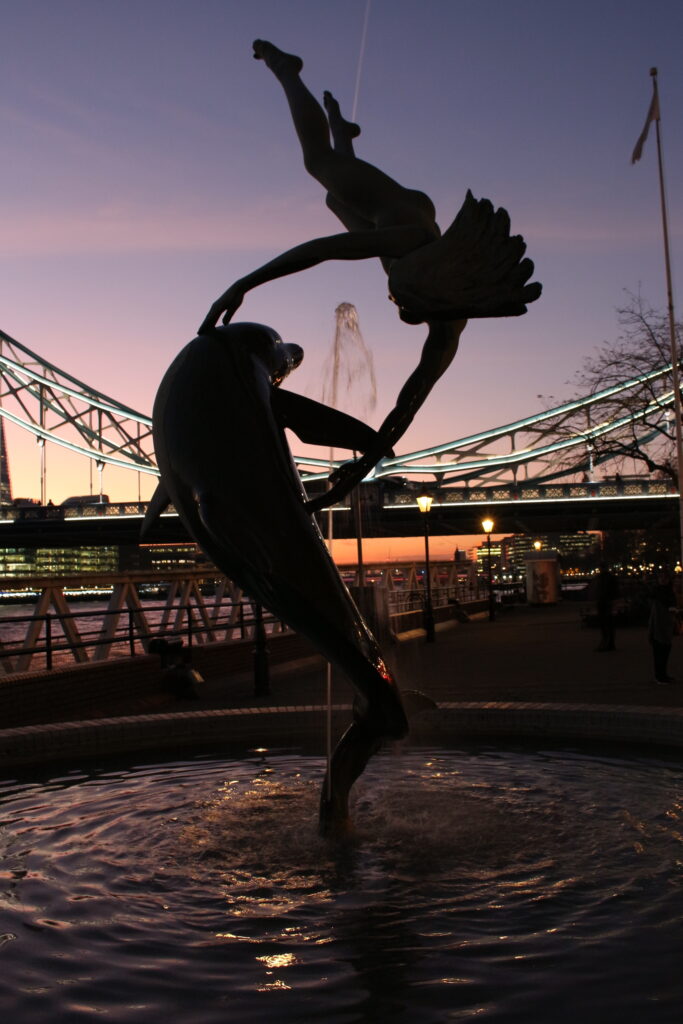
Timepiece, an impressive, eye-catching sculpture by Wendy Taylor stands by the riverside entrance to St. Katharine Docks. A monumental steel sundial in a top tourist spot, it never fails to attract attention. Its three heavy chains are in keeping with the “incorporated industrial or dockside objects in much of Taylor’s work from the 1970s onwards”. The hours are clearly marked on a large steel ring with raised dots, in the middle of which is a pointer, known as a gnomon, “resembling an oversized dockyard nail”. However, its specific positioning means that you can only read the time on it when the sun is north of the equator. Created in 1973 it was Listed Grade II in 2004.
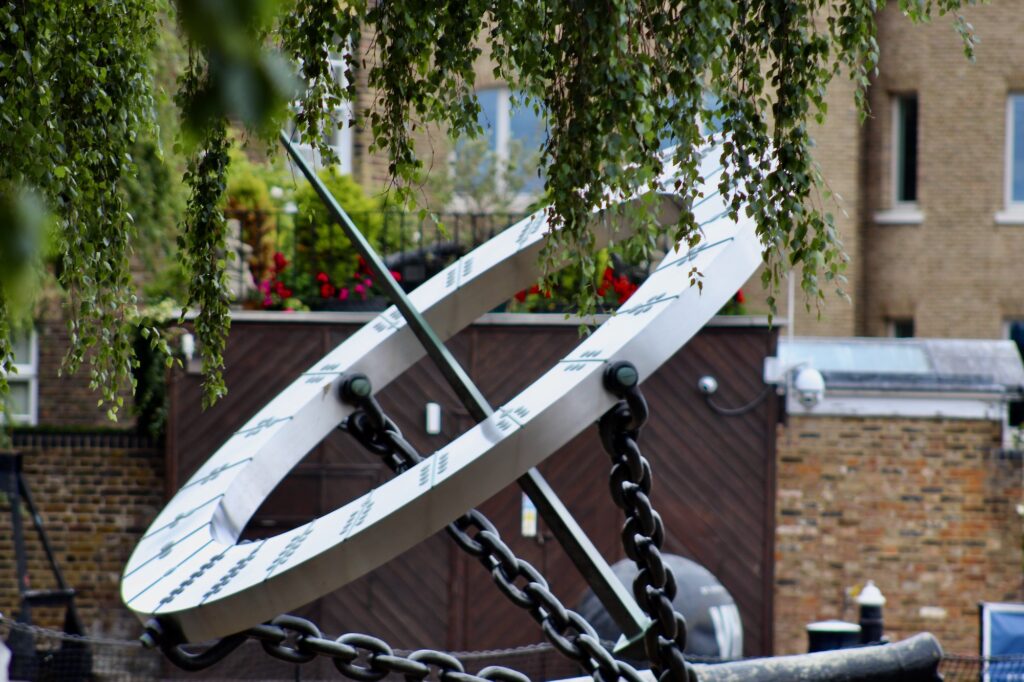
Further downstream on the opposite bank, the Quantum Cloud designed by Antony Gormley, stands on the Greenwich Peninsular near to the O2 Arena. Made of galvanised steel it was installed in 2000. If you look carefully, you can make out a human figure in its centre. There is something rather satisfying about this but when the commentator on a boat trip pointed it out as a “brillo pad”, I couldn’t help smiling.
Conceived using digital technology, Gormley explains that “The result, a combination of art and technology, will be a monument to the future, expressing the potential of the human being at the end of the twentieth century.”
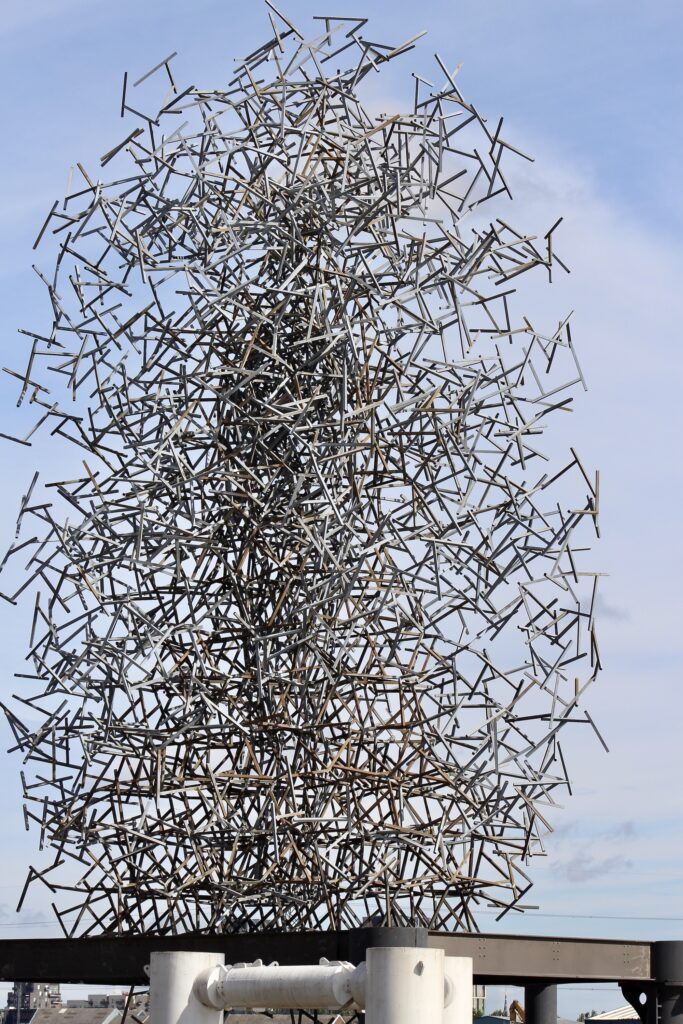
Conceived before the advent of digital technologies, the Morden gas holder, though essentially functional is none the less, to my mind, a work of art, its structure and patterns adding a filigree decoration to an industrial landscape.
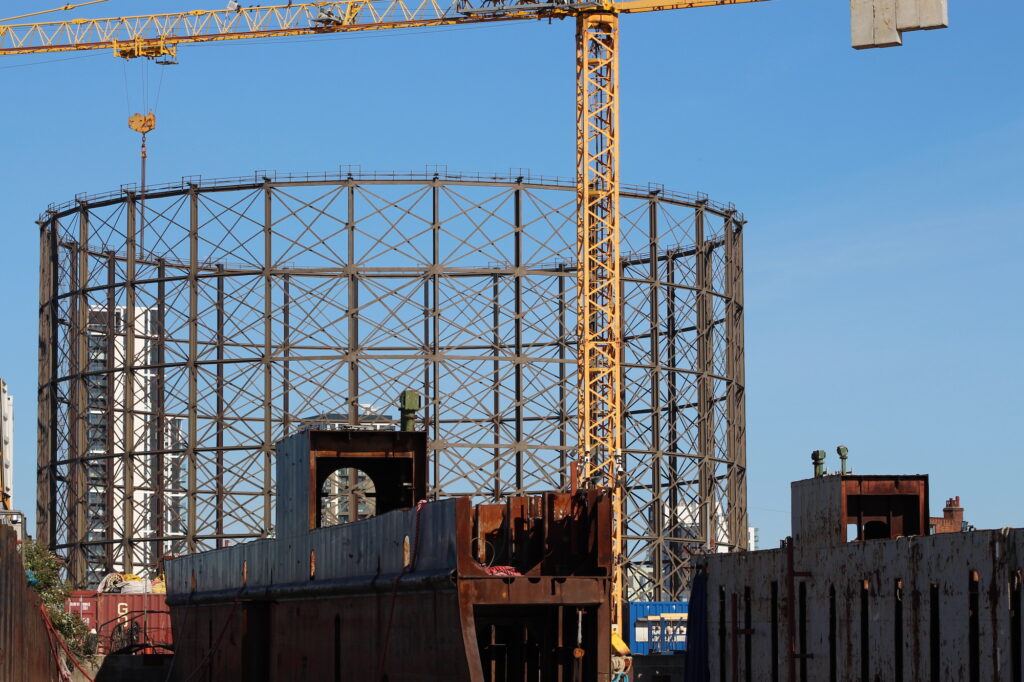
Also arguably an evolving work of art, certainly appealing to photographers and romantics, is the M.V. Royal Iris, sadly abandoned, slowly sinking, rusting into the foreshore near the Thames Barrier. Well-known and much loved in Liverpool, particularly in the 1960s, she was based on the river Mersey, where she was in service for over forty years. Alan Weston of the Liverpool Echo writes of her varied and at times rather glamorous history both as a ferry and occasional concert venue. Among other claims to fame, she was the inspiration f0r Gerry Marsden’s classic song ‘Ferry Cross the Mersey’. But she suffered from a series of accidents and the failure of various plans for her restoration. And now, still beautiful but beyond repair, it is sad to see her coming to such a slow, forsaken end…
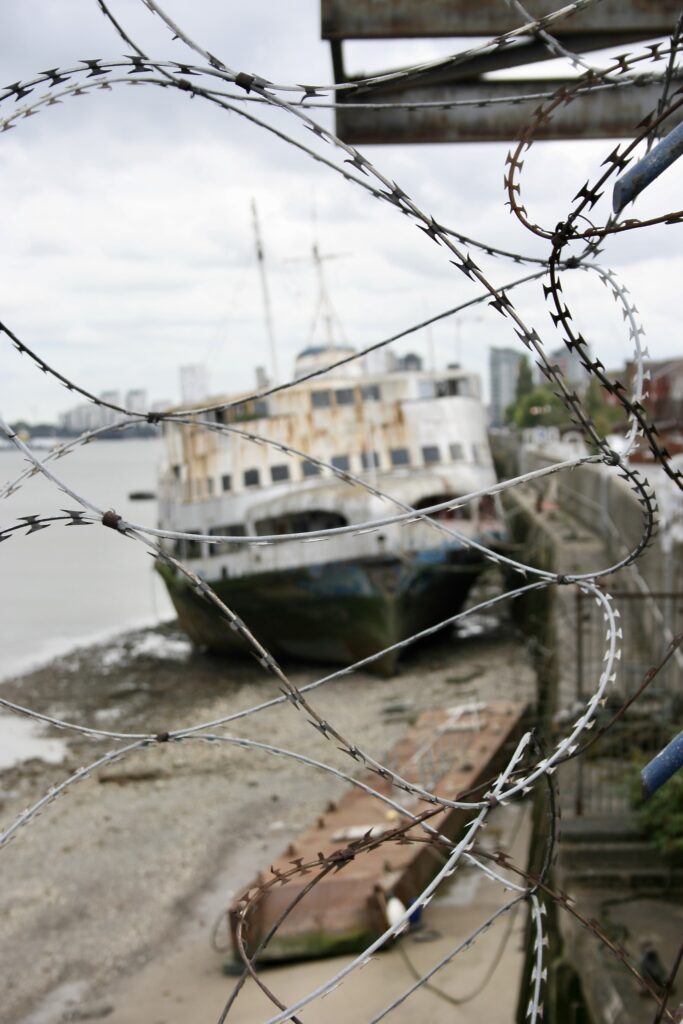
Back in the centre of London, and visible from miles around for just a few days in 2014, Japanese light artist Ryoji Ikeda’s Spectra shone powerful beams of light skywards from Victoria Tower Gardens to mark the centenary of the outbreak of the First World War. Walking among the forty-nine beams projected from massive dark, humming boxes was strange enough, but an extra other-worldly experience was added by Ikeda’s deep, slow pulsating music and the subtly changing patterns of the light beams, their eeriness heightened by the flickering of insects caught and mesmerised within them. An unforgettable experience.
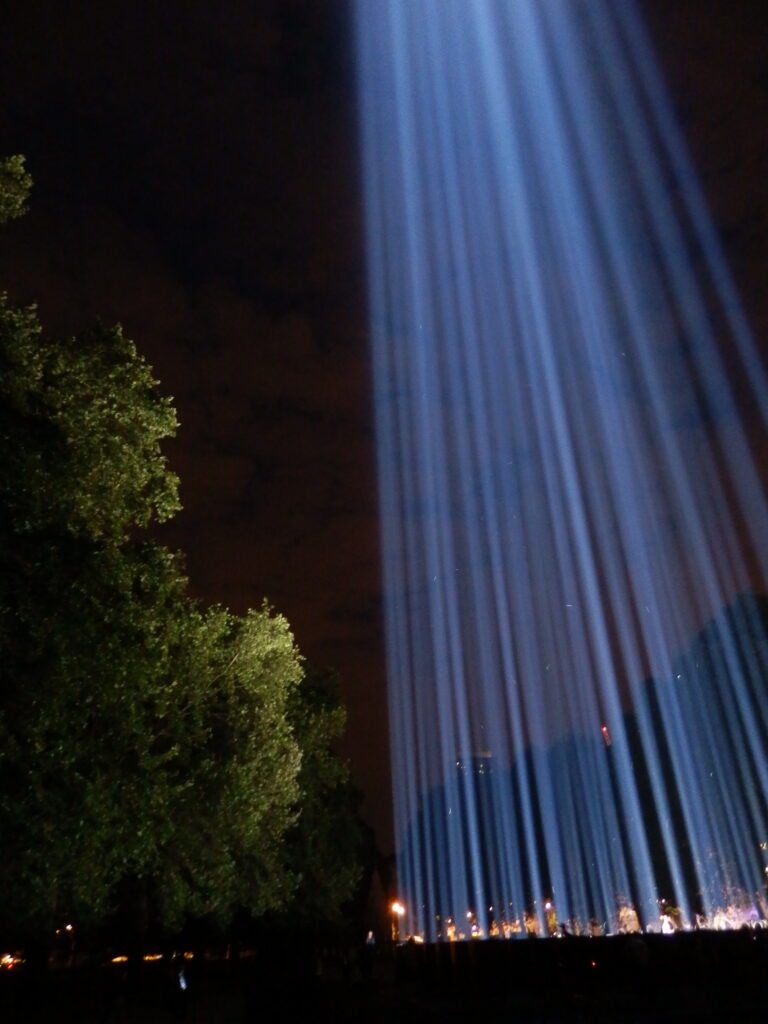
A more recent installation on an altogether different scale, destined for long term addition to London’s night light scenes, is the illumination of nine central London bridges in a public art venture known as Illuminated River. From when I first heard details of it on a boat trip where Sarah Gaventa, Director of the Illuminated River Foundation, gave a talk explaining the project and the artistic inspiration behind it, I followed its progress closely. In the following ‘gallery’ I have listed the bridges in order heading upstream from London Bridge.
It was a complex undertaking involving not only artist Leo Villareal in collaboration with architects Lifschutz Davidson Sandilands but also specialist teams to deal with specific areas of work, and the involvement of all the various authorities from whom permission for lighting the bridges had to be sought. And then there was the fund raising. A monumental task…
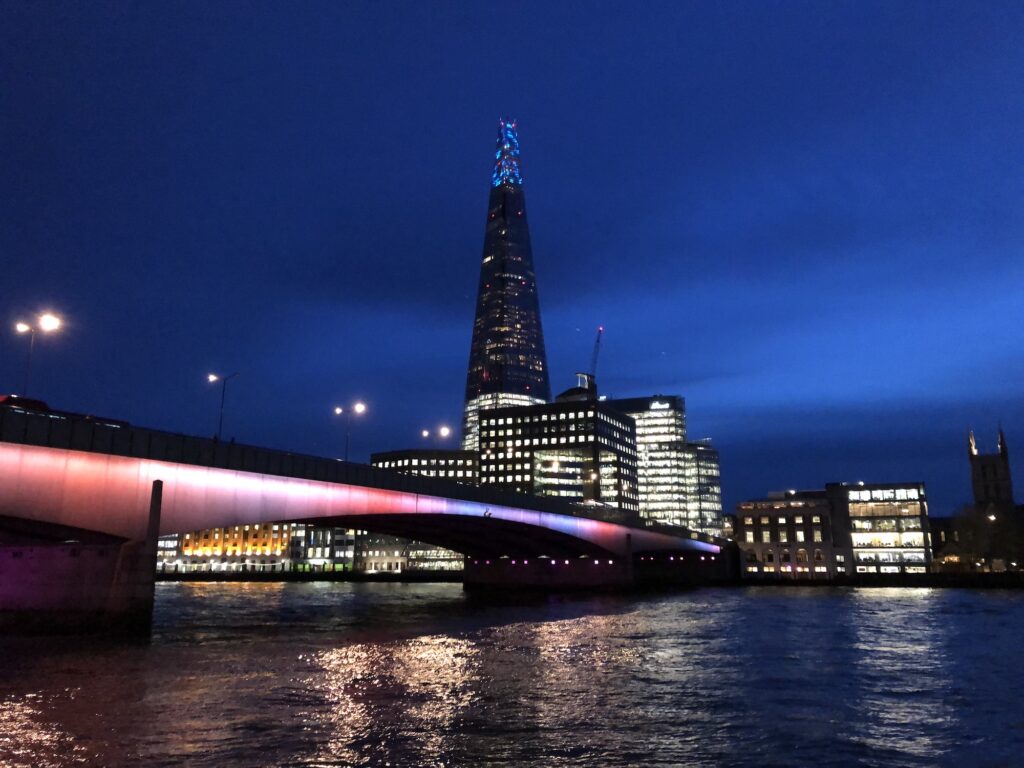
… However, it succeeded and the venture was “fully funded by private philanthropists, with the backing of the Mayor of London, including Arcadia; the Blavatnik Family Foundation; the Rothschild Foundation; and the Reuben Foundation, which funded the illumination of Westminster Bridge”,
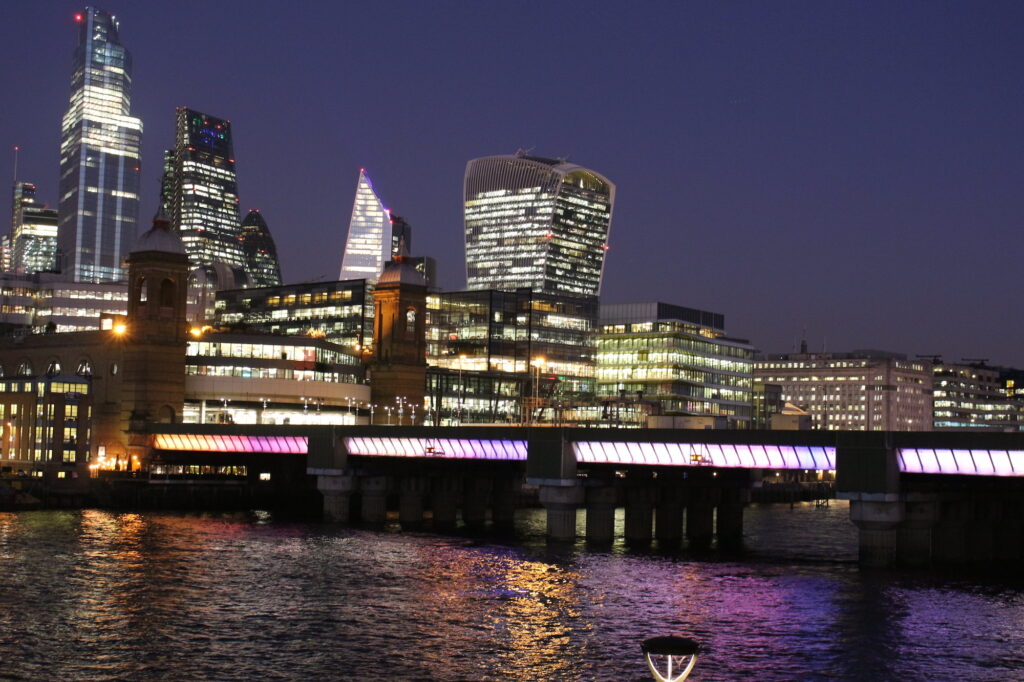
The creation of the scheme involved close consultation with Historic England to make sure that there were no “adverse visual or physical impacts on existing architecture.” In the end eighteen Listed Building consents were obtained.
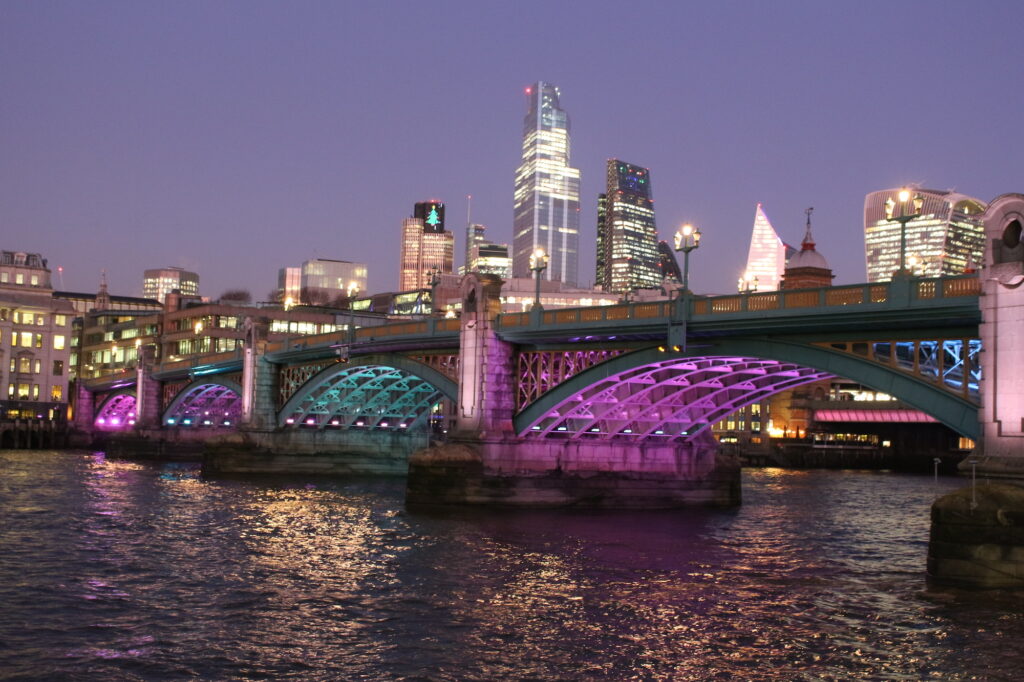
As the majority of the work was carried out on the sides, or beneath the bridges, there was no disruption of traffic or pedestrian access.
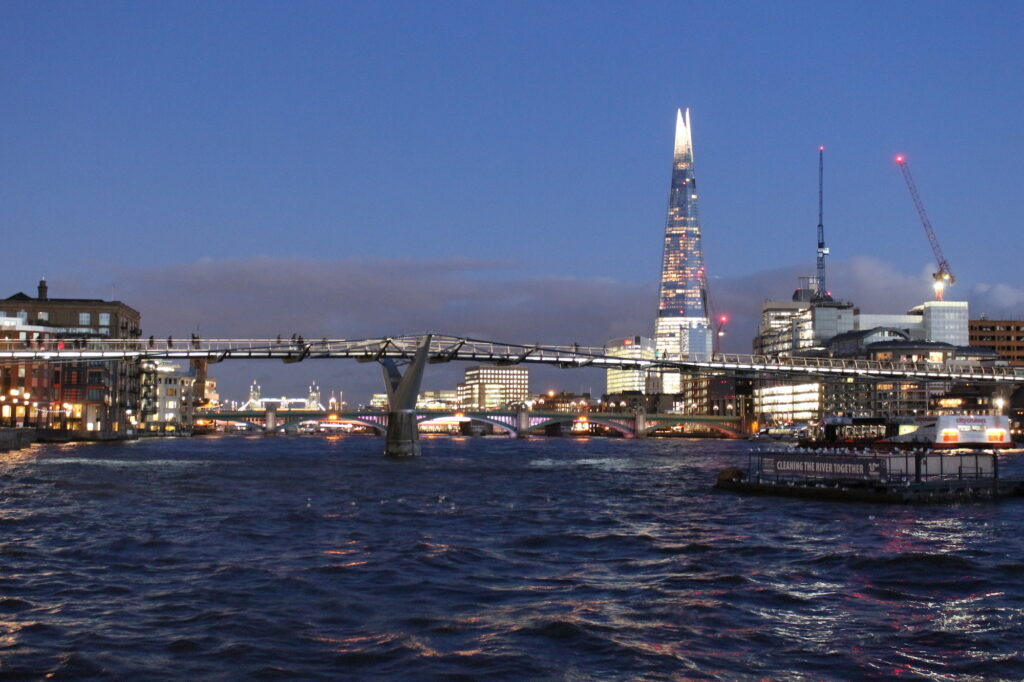
The bridges light up together at sunset, slowly beginning their computerised light-changing rhythm, so if you have time to stay by one of them for a while, you will see the evolution of the patterns beneath their arches and their reflections in the ever-dancing surface of the Thames.
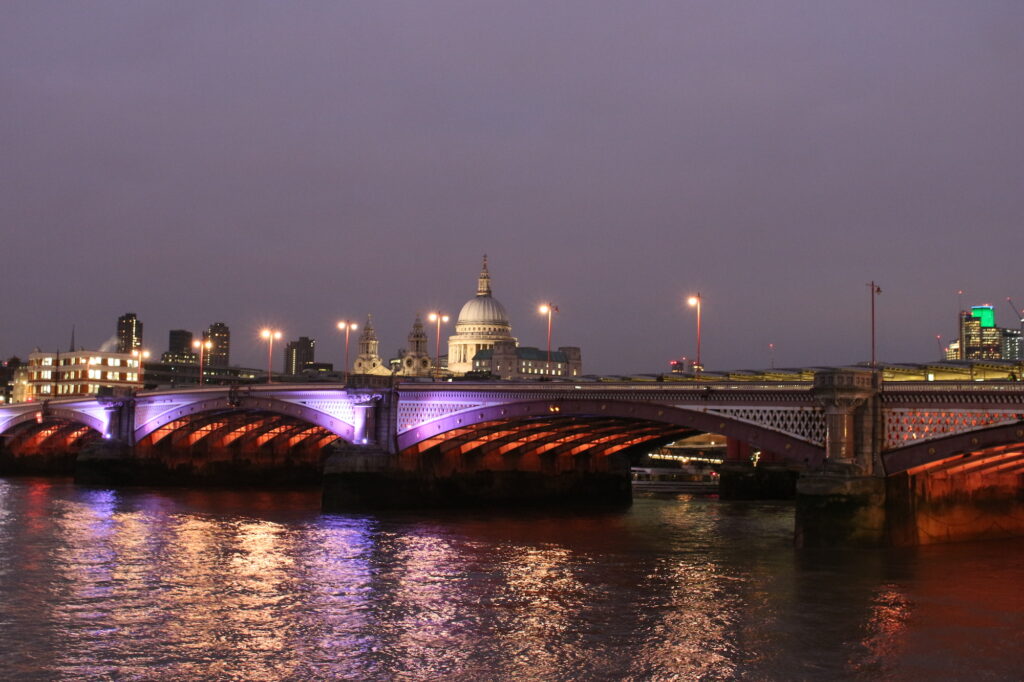
Leo Villareal’s designs are specially tailored for each bridge taking into account the cityscape around them.
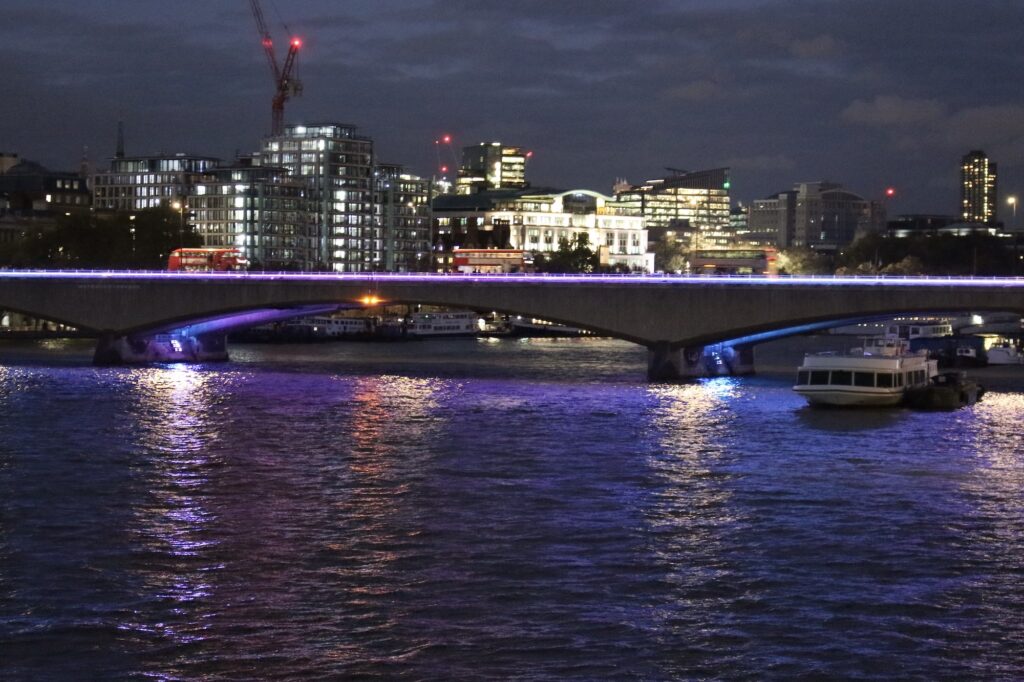
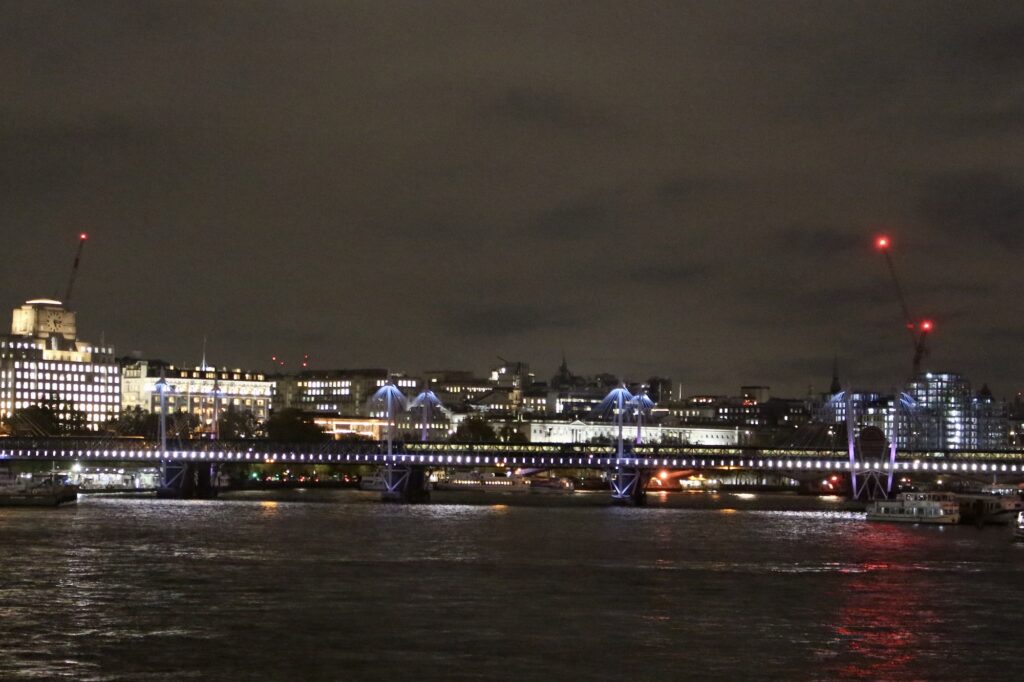
The green lighting of Westminster Bridge is a nod to the tradition, not that old (1970), of echoing the colour of the seats in the House of Commons, in the same way that the pinkish colours of Lambeth Bridge echo the red seating in the House of Lords.
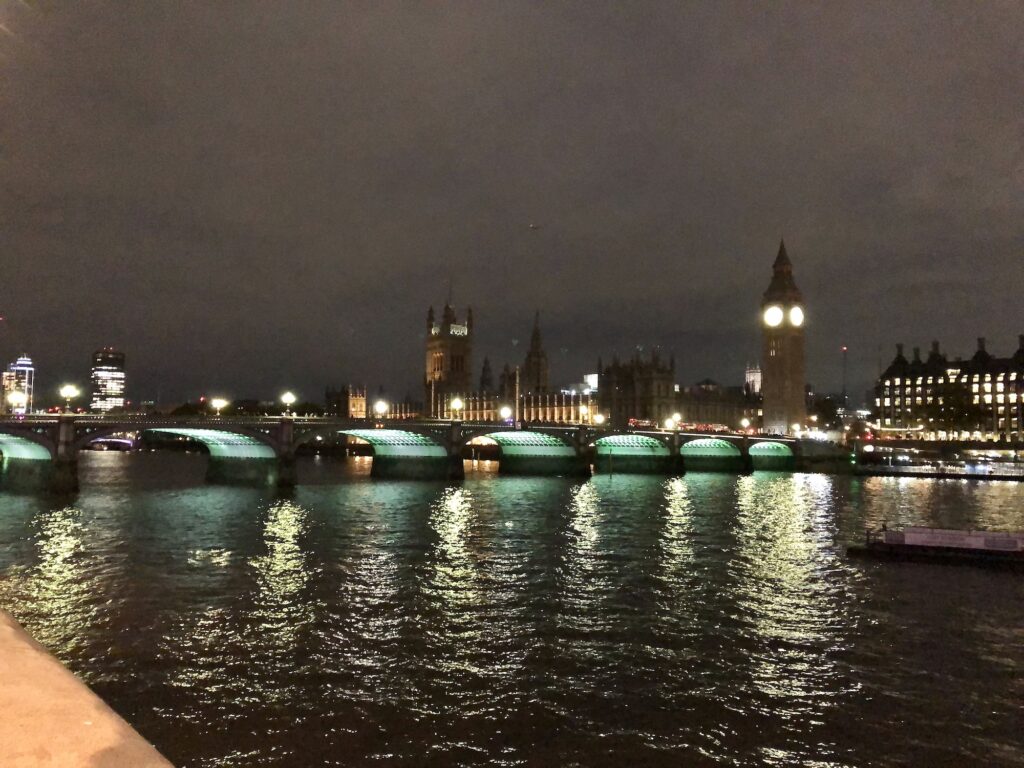
There were some concerns about the lights having an effect on wildlife in and around the river but the low energy LED lighting is muted and has reduced the previous levels of light pollution. And, by 2.00 am the illuminations fade, restoring the river to a quieter state for the rest of the night.
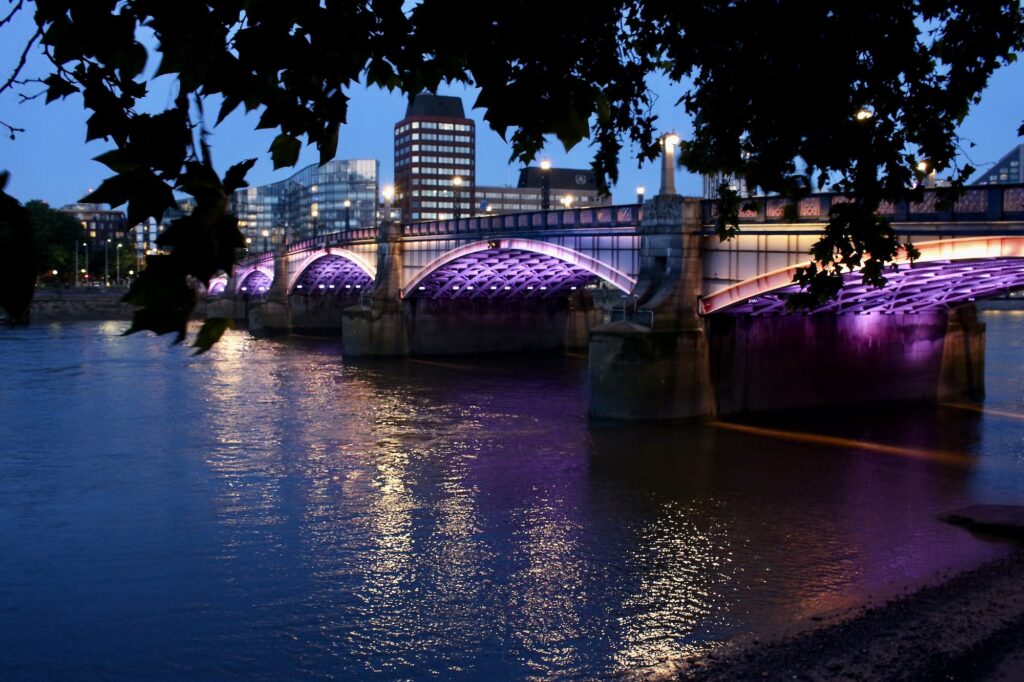
Lambeth Bridge, being closest to Victoria Tower Gardens where I walk most days, it was possible to see some of the skilled work being undertaken there by engineers and electrical specialists. It looked risky but they knew what they were doing and always had a safety boat, usually ‘Protector’, close at hand on the river below. It was the last bridge in the second, and for the moment final phase of the project, being illuminated together with Blackfriars Bridge, Waterloo Bridge, the Golden Jubilee Footbridges, and Westminster Bridge, in April 2021.
Twice in 2022 the lighting of the nine bridges was changed by Leo Villareal with a new creation of colours specially co-ordinated in honour of Queen Elizabeth. The first occasion was part of the celebrations of her Platinum Jubilee and from June 2 until June 6, all nine bridges were lit in the Jubilee colours, purple and silver.
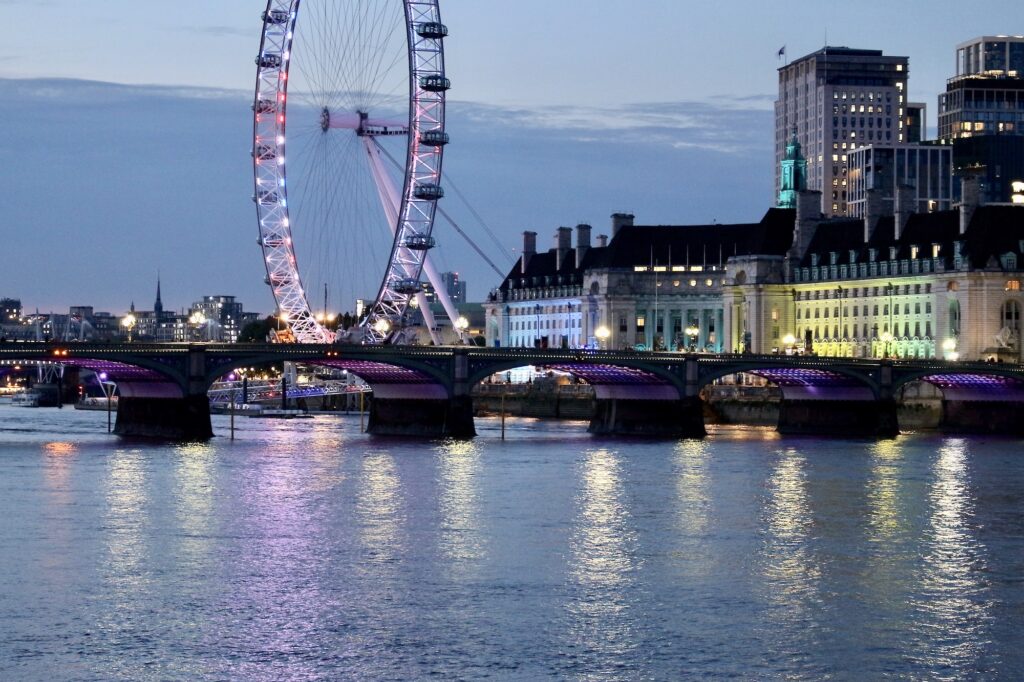
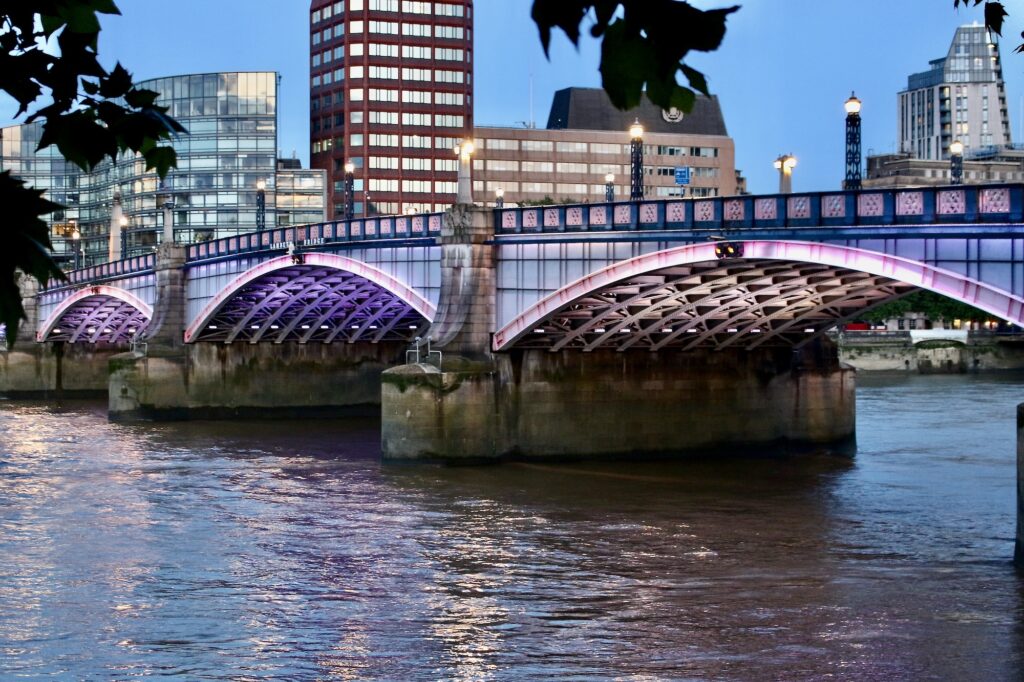
On the second occasion the lights were once again co-ordinated but this time as part of Reflections, a solemn yet heart-lifting and moving event organised by Totally Thames, with an illuminated flotilla of over a hundred boats, marking the death of the Queen. The bridges were lit at sunset on September 24 until 2.00 am on September 25. Their usual colour scheme was interspersed with silver and purple as a tribute to the Queen. Sadly I was unable to be there but this lovely film by Livett’s will give you a good flavour of that special evening.
I hope to return to the theme of Thames-side art in the future and to include sculptures that I regret not having yet been able to photograph, particularly those of Ada Salter by the Thames at Bermondsey and Princess Pocahontas at Gravesend.
Sources and further information
Sculptor Wendy Taylor
Detailed analysis of Antony Gormley’s Quantum Cloud in LUSAS article.
Article by Ian Visits The Royal Iris
The nine bridges of the Illuminated River
Article on Sarah Gaventa and the Illuminated River project in Arc Magazine.